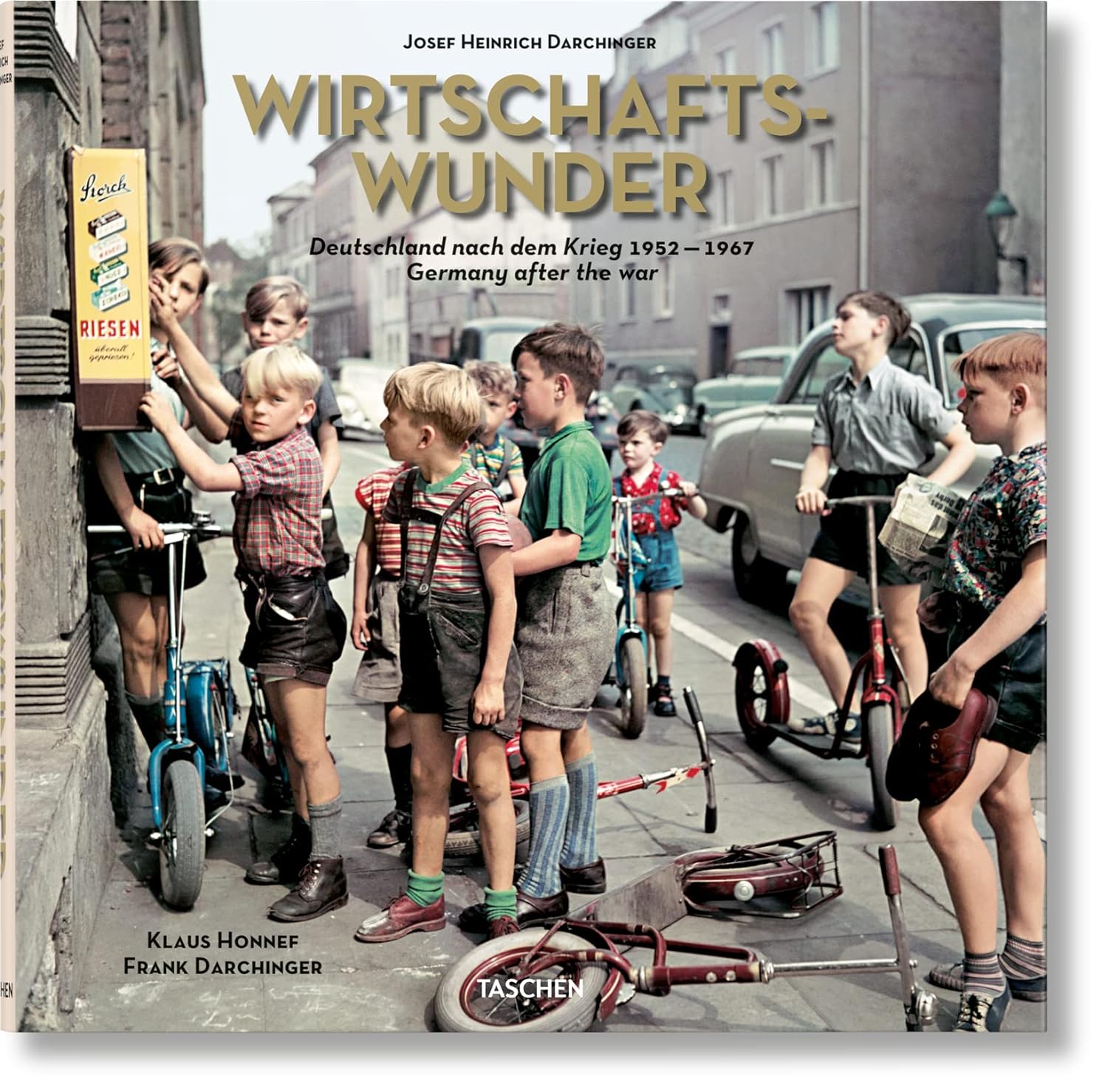Wirtschaftswunder. Germany After the War | Klaus Honnef, Josef Heinrich Darchinger

Detalii Wirtschaftswunder. Germany After the War
Wirtschaftswunder. Germany After the War - Disponibil la carturesti.ro
Pe YEO găsești Wirtschaftswunder. Germany After the War de la Taschen, în categoria Carte straina.
Indiferent de nevoile tale, Wirtschaftswunder. Germany After the War | Klaus Honnef, Josef Heinrich Darchinger din categoria Carte straina îți poate aduce un echilibru perfect între calitate și preț, cu avantaje practice și moderne.
Caracteristici și Avantaje ale produsului Wirtschaftswunder. Germany After the War
- Departament: gaming-carti-birotica
- Ideal pentru pasionații de jocuri, birotică și distracție online.
Preț: 258 Lei
Caracteristicile produsului Wirtschaftswunder. Germany After the War
- Brand: Taschen
- Categoria: Carte straina
- Magazin: carturesti.ro
- Ultima actualizare: 11-11-2024 01:46:56
Comandă Wirtschaftswunder. Germany After the War Online, Simplu și Rapid
Prin intermediul platformei YEO, poți comanda Wirtschaftswunder. Germany After the War de la carturesti.ro rapid și în siguranță. Bucură-te de o experiență de cumpărături online optimizată și descoperă cele mai bune oferte actualizate constant.
Descriere magazin:
A crucial visual document of German history, Josef Darchinger\'s portfolio of postwar West Germany reveals an extraordinary era, caught between increasing affluence and continued penury, between bomb sites and new building, between German Gemutlichkeit and the new threat of the Cold War.Picking up the pieces in postwar GermanyIt was no more than eight years after the surrender of the Nazi government when Josef Heinrich Darchinger set out on his photographic journey through the West of a divided Germany. The bombs of World War II had reduced the country’s major cities to deserts of rubble. Yet his pictures show scarcely any signs of the downfall of a civilization. Not that the photographer was manipulating the evidence: he simply recorded what he saw. At the time, a New York travel agency was advertising the last opportunity to go and visit the remaining bomb sites. Darchinger’s pictures, in color and black-and-white, show a country in a fever of reconstruction. The economic boom was so incredible that the whole world spoke of an “economic miracle.” The people who achieved it, in contrast, look down-to-earth, unassuming, conscientious, and diligent. And increasingly, they look like strangers in the world they have created.The photographs portray a country caught between the opposite poles of technological modernism and cultural restoration, between affluence and penury, between German Gemutlichkeit and the constant threat of the Cold War. They show the winners and losers of the “economic miracle,” people from all social classes, at home, at work, in their very limited free time and as consumers. But they also show a country that looks, in retrospect, like a film from the middle of the last century.For this revised edition, we have digitally remastered all photographies in a new, full-frame format that captivate with their highly pigmented colors and fine press varnish.Josef Heinrich Darchinger (1925-2013) started working as a freelance photojournalist in 1952. Darchinger’s photographs began to regularly appear in reputable German print media starting in the mid-1960s. In his years as a photographer for Der Spiegel and Die Zeit, Darchinger had a formative influence on the magazines’ national news coverage of Bonn. He also presented his work at exhibitions and in collections of photographic portraits—for instance of Helmut Schmidt, Willy Brandt, Richard von Weizsacker, or Heinrich Boll. Darchinger received numerous awards, among which was the prestigious Erich Salomon Award from the German Photographic Association.










Produse asemănătoare

Wirtschaftswunder. Germany After the War | Klaus Honnef, Josef Heinrich Darchinger
![]() carturesti.ro
carturesti.ro
Actualizat in 11/11/2024
258 Lei





